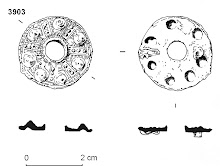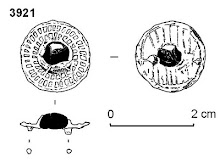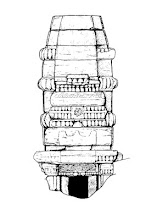Just got the basic framework together for the Gloucestershire cross-slab survey blog: http://gloscross-slabs.blogspot.co.uk/ It will fill out a bit more over the next few months as time allows.
Active fieldwork is on hold at present whilst we get the 100 Minories site finished, but once that is done we hope to get out and about systematically recording cross-slabs across the county and building up a gazetteer and database of the surviving cross-slabs. There is also a lot of work to be done transcribing antiquarian notes on cross-slabs, and building a database and GIS for the project.
Eventually we hope to cover the whole county, from the Cotswolds to the Forest of Dean, and publish a fully illustrated corpus of the surviving medieval cross-slabs in Gloucestershire as well as any records of slabs which have been destroyed.
We'll be posting photos, images and updates on the Cross-slabs blog, and on Facebook as the project runs.
Active fieldwork is on hold at present whilst we get the 100 Minories site finished, but once that is done we hope to get out and about systematically recording cross-slabs across the county and building up a gazetteer and database of the surviving cross-slabs. There is also a lot of work to be done transcribing antiquarian notes on cross-slabs, and building a database and GIS for the project.
Eventually we hope to cover the whole county, from the Cotswolds to the Forest of Dean, and publish a fully illustrated corpus of the surviving medieval cross-slabs in Gloucestershire as well as any records of slabs which have been destroyed.
We'll be posting photos, images and updates on the Cross-slabs blog, and on Facebook as the project runs.
Please get in touch if you have any information on cross-slabs in the county, or are interested in helping with the project.



















